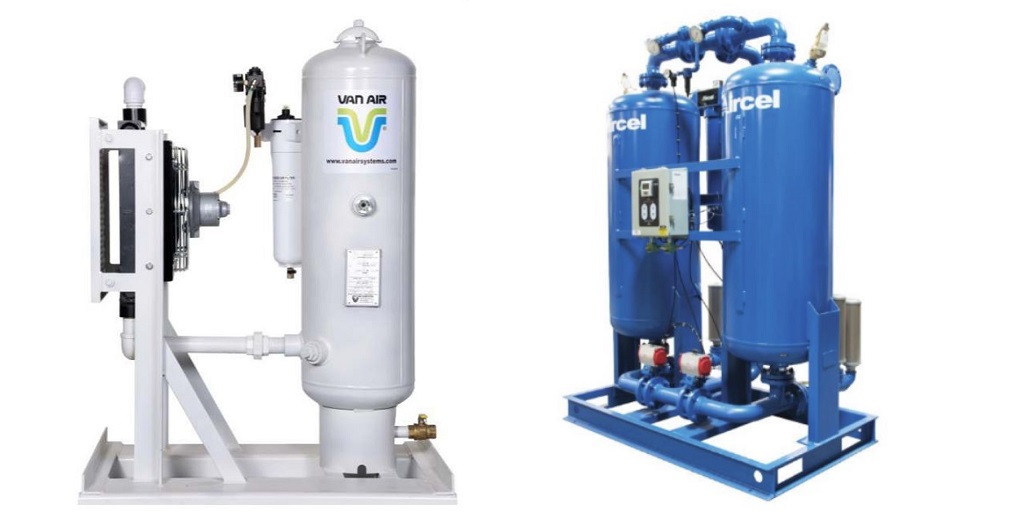
Compressed air is essential in research and testing environments. If moisture, oil, or contaminants are not removed, your instruments can fail or produce inconsistent data. A laboratory air dryer provides the stable and dry air supply you need for precision work.
What a Laboratory Air Dryer Does
A laboratory air dryer removes water vapor and impurities from compressed air before it reaches sensitive instruments. By lowering the dew point, it ensures that condensation does not form inside lines or equipment. Depending on the type, it may also filter out fine particles and oil aerosols.
Laboratory setups often use fractional-horsepower compressors. These smaller compressors save space and energy, but the air they produce is still full of moisture. Without drying, the result can be corroded valves, clogged filters, or poor readings in high-value instruments. A properly sized air dryer keeps air quality consistent and extends the life of your equipment.
When You Need Very Dry Air
Certain research processes cannot tolerate even small amounts of moisture. Gas chromatography, mass spectrometry, and FTIR systems all depend on ultra-dry air for accurate results. A refrigerated dryer can lower dew points to around 35°F, which is fine for general use. However, if your work requires dew points as low as –40°F or lower, a desiccant air dryer is the right choice.
The International Organization for Standardization (ISO 8573-1) sets air quality classes for moisture. For example, Class 2 requires a pressure dew point of –40°F. Many laboratories meet this standard to protect detectors and maintain reliable output.
Benefits of Using a Laboratory Air Dryer
Adding a dryer to your lab setup provides measurable improvements. Consider the following five benefits:
- Accuracy: Eliminates water vapor that can interfere with detectors or sensors.
- Longevity: Reduces corrosion and extends the service life of compressors and instruments.
- Compliance: Helps you meet ISO 8573-1 and other quality standards.
- Reliability: Keeps air supply stable during peak usage without unexpected failures.
- Efficiency: Prevents downtime and costly repairs caused by moisture damage.
Choosing the Right Dryer for Your Lab
Selecting the correct model depends on your air demand and the specific requirements of your process. A few points to consider:
- Flow capacity. Know the standard cubic feet per minute (SCFM) required by your instruments. For example, a dryer rated at 0.5 to 3 SCFM is suitable for small-scale lab work.
- Dew point. Decide if a refrigerated unit is enough or if you need a desiccant model for lower dew points.
- Space. Compact dryers can be installed inside instrument cabinets or directly at the point of use.
- Energy use. Some heatless desiccant dryers run at less than 6 watts, minimizing power draw.
- Filtration. Many dryers include prefilters and afterfilters rated down to 0.01 micron to remove particles and oil.
If you choose a dryer that fits your lab’s specific requirements, you can control costs while still meeting essential standards.
Practical Applications in Research
Laboratory air dryers are used across different fields. In pharmaceutical testing, they prevent moisture from interfering with drug stability studies. In semiconductor research, dry compressed air avoids condensation on wafers. In life science labs, they support clean, stable air for glove boxes and automated liquid handling systems. Even small dental or medical research labs use them to keep pneumatic tools and devices consistent.
If you are running sensitive laboratory instruments, a laboratory air dryer is more than an add-on. It is a safeguard that ensures your work remains consistent, your instruments last longer, and your data meets strict quality standards.
For dependable options sized for laboratory and research needs, you can review selections at Air & Vacuum Process, Inc. online.


